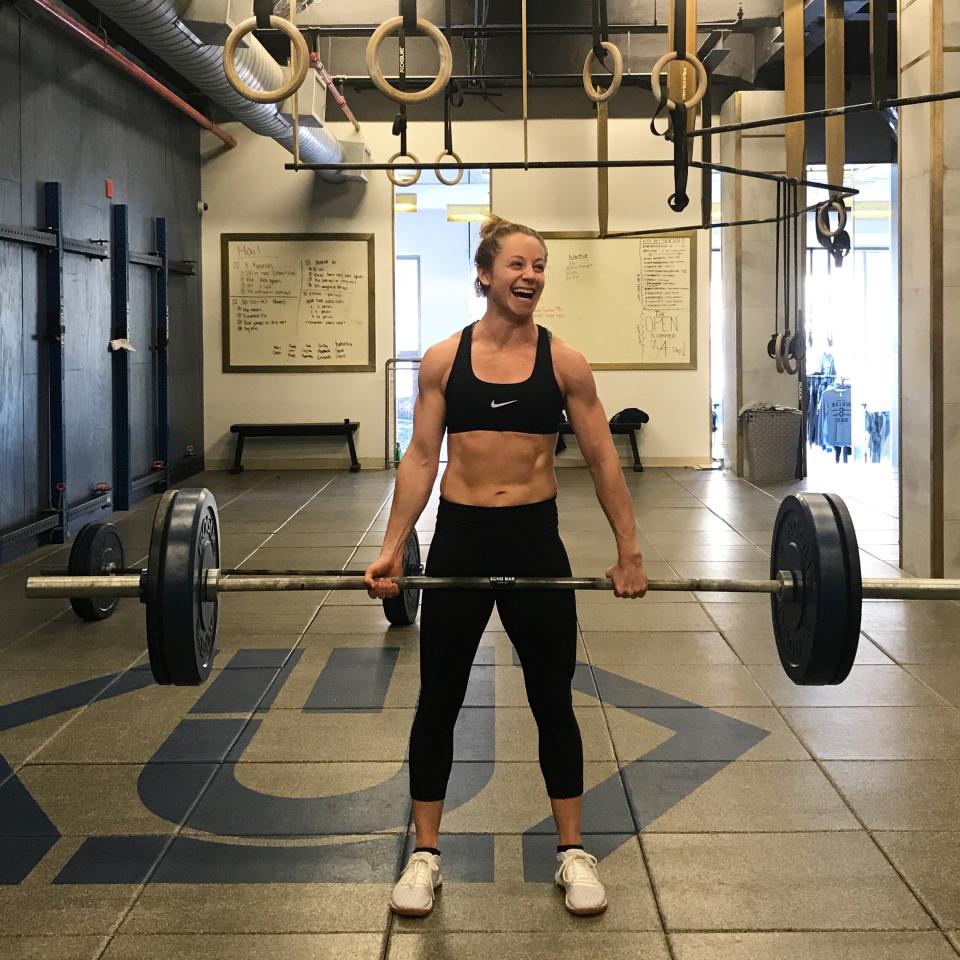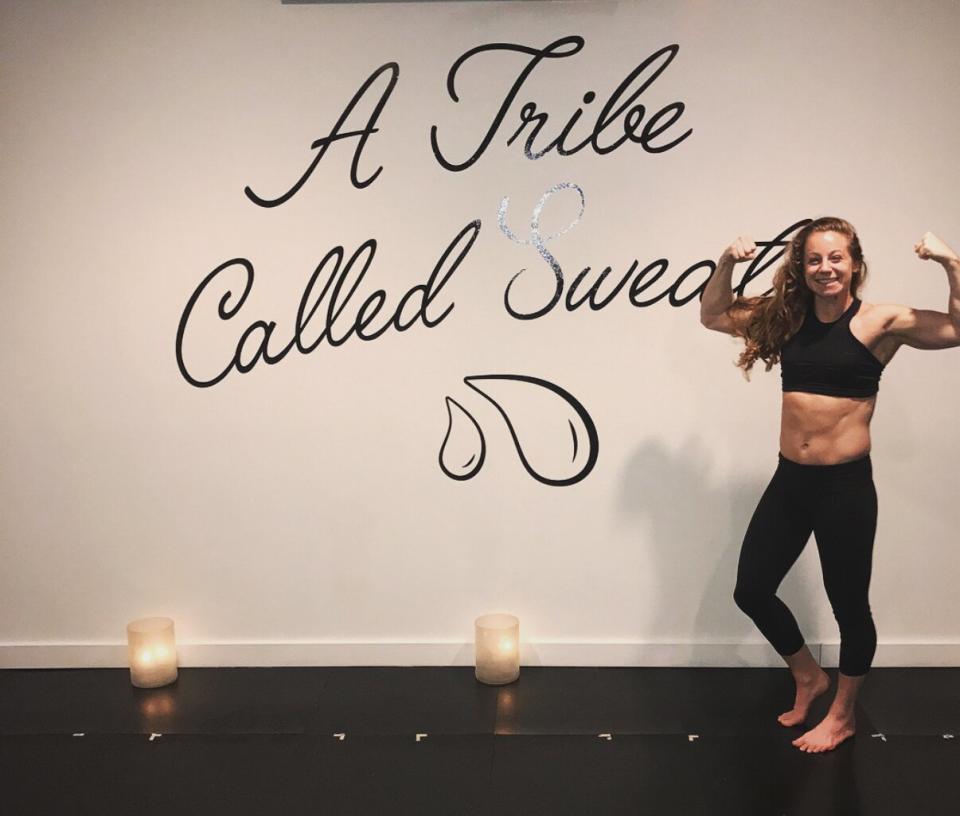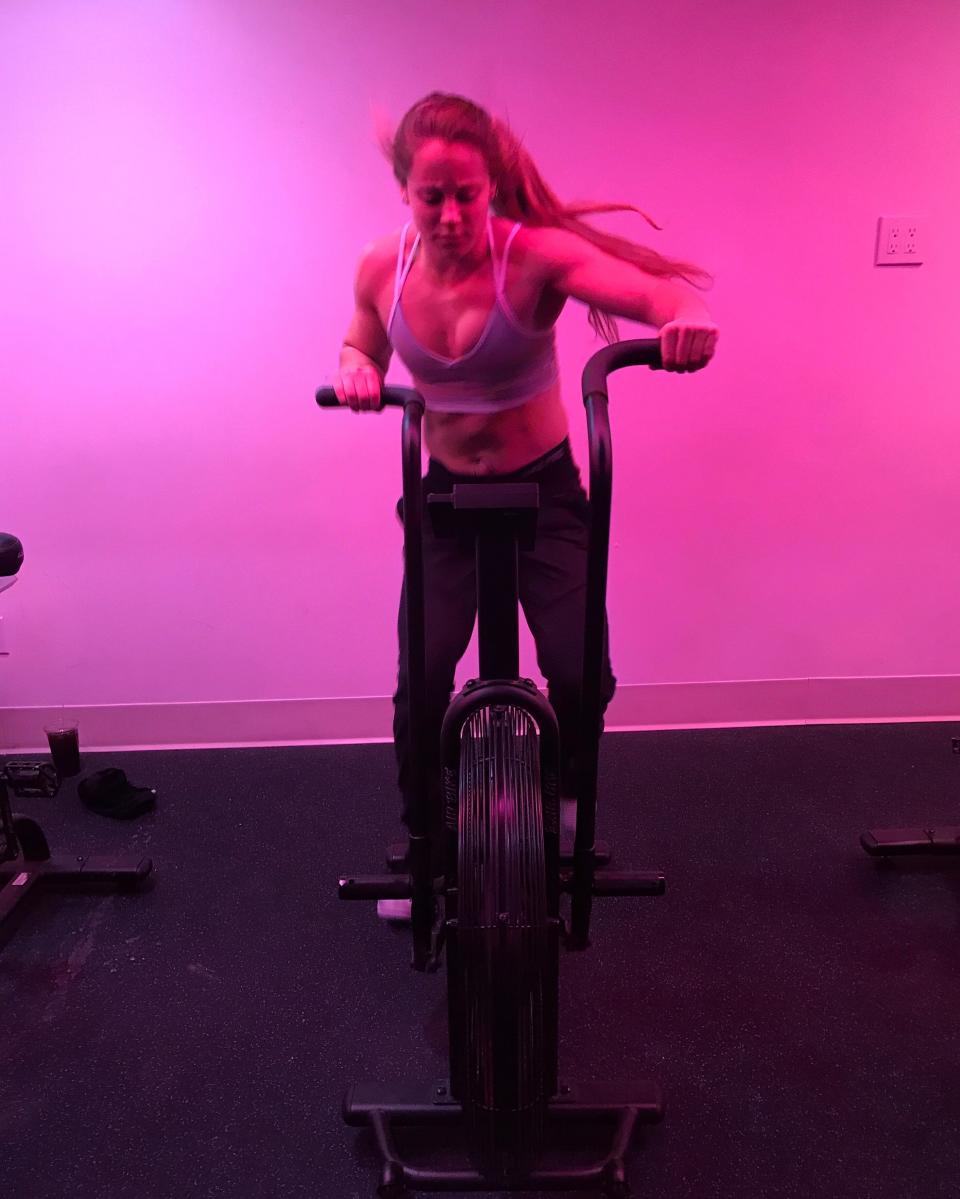I Committed to a Month of Yoga and Became a Better CrossFit Athlete
Handstand push-ups, muscle-ups, deadlifts? No problem. But downward dog, penguin pose, warrior? No way. I'll admit it: I never practiced yoga, dismissing it as a luxury for people with lots of time on their hands. (Related: The Yoga Workout for People Who Hate Yoga)
But this stubborn belief didn't take into account something very important: You don't need more time for the things that are important, you make time. I learned this the hard way.

How Yoga Became a Necessity
For nine months, I'd been working 60-hour weeks while still managing to hit the CrossFit gym for two hours a day, every day. The overtime hours in the box were paying off: I had finally figured out pistol squats (aka one-legged squats), I learned to cycle ring muscle-ups so that I didn't have to do them one at a time, and my ever-weak overhead squat had finally gotten good enough that I could do it while adding other movements.
Training hard and often had been a part of my routine for the last eight years. But like so many, I resisted the very notion of yoga because well, I didn't get it. I felt like an outsider to the whole "practice."
First off, I don't look like The Southern Yogi. I'm not spiritual like Kathryn Budig-and I'm certainly much shorter than Jessica Olie.
More than that, though, I thought I'd be bad. I can't even touch my toes. (Toes-to-bar? Fine. But fingertips to toes... Yikes!) I don't know how to breathe right. (Thirty minutes of high-intensity, hell yeah! Three minutes of nose-breathing? No freakin' way.) And I might enjoy chanting "Break" at the end of a hard CrossFit class, but humming "Namaste" in a yoga studio would surely feel severely out of character. (Try these poses to naturally relieve a headache with yoga.)
But my hamstrings were getting progressively tighter. My joints had become squeaky. My shoulder mobility was getting in the way of a snatch PR. And I knew my entire performance could benefit from a little muscle TLC. So when two of my coaches encouraged me to try yoga for one month, just to see if it would help take my performance to the next level, I accepted. Now I just needed to find a studio that would make sticking with yoga easy (and, hopefully enjoyable).
Finding What Worked for Me
My requirements for the perfect studio were as follows: The class couldn't bore me. If I was bored during my first hour, I knew I'd find any excuse to ditch. The vibe of the studio needed to be just right. I needed a space with good music, gram-worthy lighting, and knowledgeable (but not intimidating) instructors. I also wanted to make sure that there were people of a similar background as me in class. I did not want to feel like an out-of-place immobile turkey burger in a sea of spaghetti-squash yogis. (Related: The Most Instagrammable Fitness Studios In the U.S.)
So I did some research and heard back from the cofounder of Y7 Studio, Sarah Larson Levey. She told me that the hip-hop yoga studio was dark, candlelit, mirror-free, and blasts hip-hop music because they don't want people to compare themselves to others but rather to feel comfortable moving, regardless of their experience level. That clinched it for me, and I bought a 10-pack bundle that would last me a month.
I booked my first class for 10 a.m. and was so nervous that I couldn't sleep. When I finally did manage to fall asleep, I'd wake up drenched in sweat. I got to class 30 minutes early and told the person at the front desk that I'd never done yoga before. Ever. Like in my entire life. She suggested that I grab a spot in the back so that I could watch the other people and copy their movement patterns if I got "lost" during the flow.
The First Impression
Everyone in the changing area was walking around in stylish sports bras and leggings. It kind of felt like a CrossFit box-just without the knee-sleeves, wrist-wraps, and chalk stains. And much to my surprise, the other athletes came in all different shapes and sizes. If all these other women and men could do it, so could I, I thought. (Related: This Photo Series Proves Yet Again That Every Body Is a Yoga Body)
So I snagged a mat place in the back, and after five minutes of easy-to-follow movements, my nerves started to dissipate. The hour that followed was so much more similar to CrossFit than I could have imagined. Vinyasa flows and Chaturanga were just like push-ups (which I could do). Chair pose was just an air squat variation (and as a lover of the famous CrossFit workout "Cindy," I could handle some air squats). And warrior I, II, and III were just like lunges (which I was used to doing with weight). (Related: Yoga for Beginners: A Guide to Different Types of Yoga)
When the class moved on to what the instructor referred to as more difficult positions, like crow, headstands, and eagle, I was surprised how much the core strength I'd developed in the box translated to balance and strength on the mat.
For me, the most difficult part of the class was the last 15 minutes when we moved through a series of stretches like pigeon, happy baby, plow, and forward folds. But with Kanye playing in the background, I could feel my body transition between resisting the pose into accepting the mild discomfort of moving in a way that was foreign to me.
By the end of class, I was drenched in sweat, smiling, and didn't even feel silly repeating "Namaste" back to the instructor at the end. I knew that by the end of the month, I'd be a hip-hop yoga addict.

The Unforeseen Results
Each week I noticed a new benefit. After the first week, I felt my hips open up quite a bit. And after the second, I noticed that my posture had improved from all the shoulder opening and core strengthening work. By the third week, I could have sworn my stomach looked a little more defined from all that balancing. And by the end of the fourth week, I truly felt like a more well-rounded CrossFit athlete.
Not only did this new practice allow me to become more aware of my movement patterns, breathing habits, and imbalances, it was translating to real results in the box.
The increased core and shoulder strength from downward dog and free-standing headstands translated to a heavier shoulder to overhead press and better handstand push-up positioning. The combination of pigeon, chair, and warrior poses helped ease some of the tension from my hips and hamstrings, which meant that breaking parallel on my squat clean, squat snatch, and wall balls was easier than ever.
I even noticed the mental benefits of yoga. If you've ever done a WOD, you know how "in the moment" you can get during a hard workout. For me, that's what makes CrossFit so addictive. But sometimes, I'll fail to get into that headspace during a workout.

By the end of the month, I found myself losing focus during the middle of a workout less often. Levey suggests that might not be a fluke. She told me that it's probably connected to the fact that yoga forces you to stay in touch with your body and mind for a full 60 minutes. Whenever my thoughts would stray during a workout, I'd use the skill of connecting back to my body, which I'd learned from yoga, to finish the WOD strong. (For more yoga perks, check out these six hidden health benefits of yoga.)
It would have been easy to allow my yoga-skepticism ro keep me from giving the practice a try. But I am so glad my coaches challenged me to step outside my comfort zone. My monthlong challenge may be over, but my commitment to continuing to going to class is not. I've just purchased a second monthlong package, and I'm ready to see in what other ways this new wellness habit helps me become a better CrossFit athlete.

